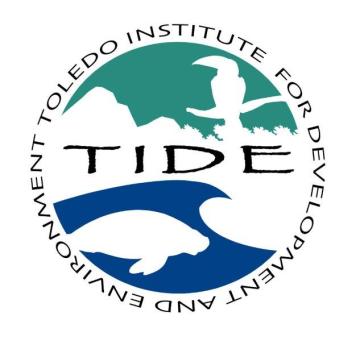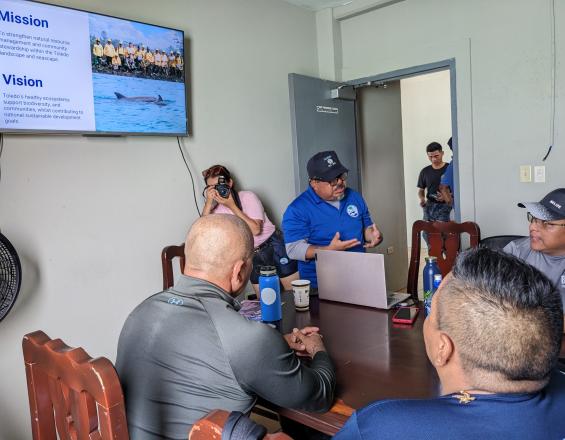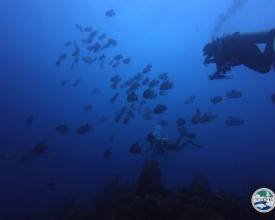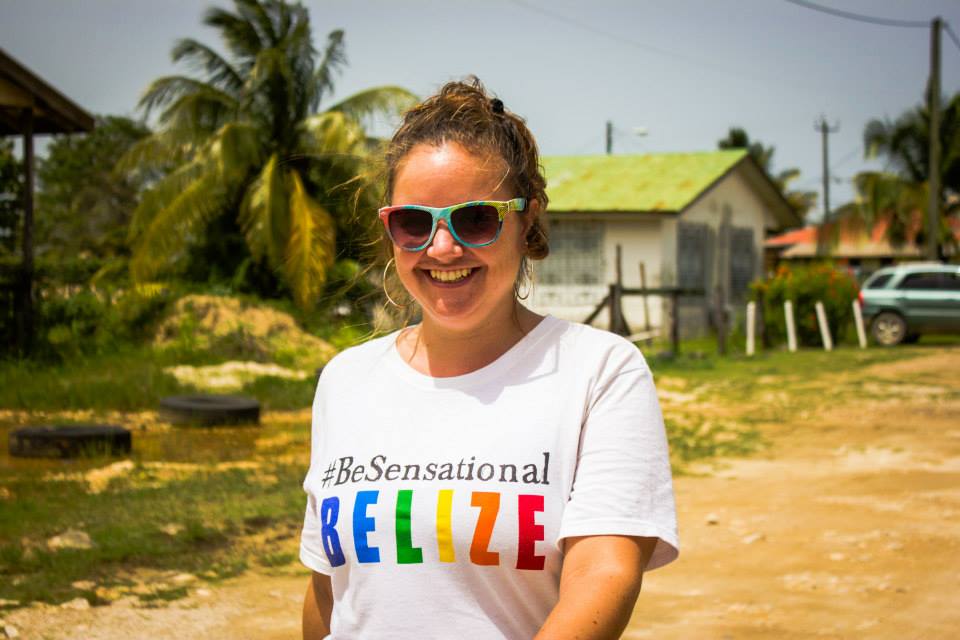
Enhancing management in a marine protected area through strengthened partnerships

Cayman Crown reef is a multi species fish spawning aggregation (FSA) site overlapping the maritime borders between Guatemala and Belize. Located within the Sapodilla Cayes Marine Reserve (SCMR), the reef is considered a biodiversity hotspot with an urgent need for improved management. The Toledo Institute for Development and Environment (TIDE) - a non-governmental organization - has been working with the Ministry of Blue Economy and Civil Aviation (MBECA) and the Belize Fisheries Department (BFD) to improve management at the site by developing a national co-management framework for marine protected areas, drafted by the Government of Belize. Delays with the implementation of the co-management framework have hindered the effective protection of the reef. Through a strengthened relationship with MBECA and BFD, a MOU was signed in October 2022 designating TIDE as co-managers of Cayman Crown, and two other established FSA sites within SCMR. TIDE aims to obtain full co-management of SCMR by the end of 2023.
Context
Challenges addressed
Enhancing the management of the Cayman Crown reef by designating TIDE as the co-manager of the site, addresses the following challenges:
- Cayman Crown, Rise and Fall Bank, and Nicholas Caye are all FSA sites, whether established or non-established. These sites serve as fish replenishment zones, safeguarding the reproductive capacity of fish species in the region through the protection of important fish species and their habitats.
- The transboundary nature of the site unfortunately facilitates illegal activity in the area – in terms of illegal entry, extraction of resources, and use of prohibited fishing gear. By increasing the presence of enforcement officers, it is anticipated that violators are less inclined to continue using the area, reducing the fishing pressure.
Location
Process
Summary of the process
Strengthened partnerships, as well as institutional experience and financial capacity enable the effective management of MPAs.
Building Blocks
Strengthening partnerships to enhance management
A change in government administration in November 2020, brought the establishment of the Ministry of Blue Economy and Civil Aviation and a change in the National Co-Management Framework for Marine Protected Areas. The creation of the framework has been ongoing since 2020 and has delayed TIDE's application as co-manager of Sapodilla Cayes Marine Reserve. With funding commitments to conduct enforcement at the reserve, the delayed designation of TIDE as co-manager of the MPA meant a delay in effective management of the Cayman Crown reef.
With a limited timeframe for implementation, TIDE, MBECA and BFD signed an memorandum of understanding (MOU) for TIDE to co-manage Cayman Crown and two established FSA sites within SCMR. This required continuous communication among the entities that resulted in a mutual agreement valid for one year. A rollout of the National Co-Management Framework is expected for 2023. In the interim, Cayman Crown, a highly biodiverse reef found lying between the maritime borders of Belize and Guatemala, is being effectively managed through the strengthening of partnerships.
Enabling factors
- Willingness on the part of the Ministry of Blue Economy and Civil Aviation, Belize Fisheries Department, and TIDE to come to an agreement for co-management of the Cayman Crown.
- Continuous communication among all entities involved during the process, especially in the development of the memorandum of understanding.
Lesson learned
Continuous and open communication with government authorities is necessary improved collaboration and achievement of common goals, especially for the conservation of natural resources.
Institutional (and financial) capacity for co-management of a MPA
The Toledo Institute for Development and Environment was established in 1997 by local communities in southern Belize to combat illegal fishing and harvesting of the West Indian Manatee. The organization aims to strengthen natural resource management and community stewardship within the Toledo landscape and seascape by supporting biodiversity and communities, whilst contributing to national sustainable development goals.
Over the years, TIDE has successfully managed three protected areas, including the Port Honduras Marine Reserve. TIDE has continually demonstrated its capacity to effectively manage protected areas and in October 2022 its institutional knowledge enabled the NGO to add Cayman Crown to its portfolio as its fourth co-managed area in southern Belize.
Enabling factors
- TIDE has over 20 years of experience in the co-management of protected areas, including the Port Honduras Marine Reserve.
- The NGO has a proven track record in successful fundraising for the management of protected areas. For example, TIDE had secured funding for an enforcement team to oversee management of Cayman Crown prior to obtaining co-management.
- Adequate infrastructure at the field station to house the enforcement team and meet subsistence needs. This also showed commitment on behalf of TIDE to MBECA for long-term management of the site.
Lesson learned
Having the proven experience and institutional knowledge in the field facilitated TIDE reaching to an agreement with the relevant government agencies for co-management of Cayman Crown. Likewise, having funding available to implement activities.
Impacts
Recent studies at the Cayman Crown reef have demonstrated the reef's resilience to environmental pressures, as well as its importance to the Mesoamerican Reef System as a biodiversity hotspot. Enhancing management efforts at the reef site will reduce fishing pressure, resulting in healthy populations of fish and coral ecosystems, as well as increased food security in the region.
Considered a transboundary site, the Cayman Crown reef is highly impacted by illegal fishing and the use of unsustainable or illegal fishing gear, mainly from fishers from neighboring countries. The MOU granting TIDE co-management of the site allows greater presence of rangers to conduct surveillance and protection of the reef. In the coming months, TIDE anticipates a decrease in the number of fishers illegally extracting resources from the reef, as well as a decrease in the use of unsustainable or illegal fishing gear. This will be achieved through augmenting the knowledge of local users on the importance of the site and the need for its protection, whilst rangers are on patrol.
Beneficiaries
Coastal communities across Belize are highly dependent on fishing as a source of income and for food security. Enhancing the management of the site guarantees healthy fishery resources for the local population for years to come.



